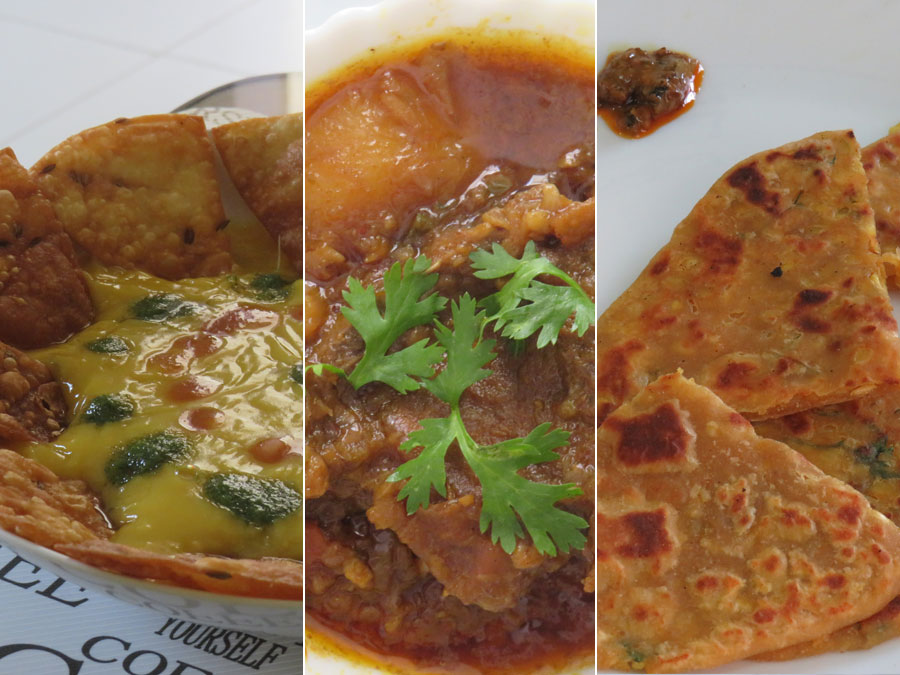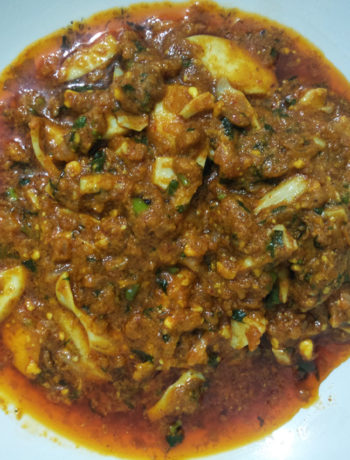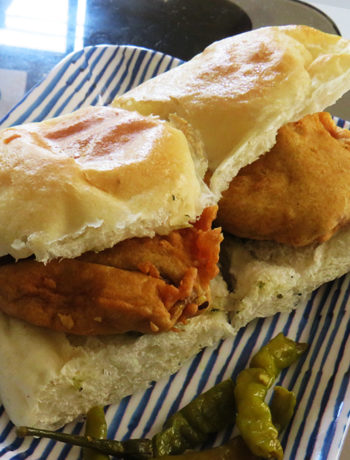Know Sindhi Food Culture
Some History
Sindh (In Pakistan) has been a central location from where various Islamic forces in history have settled down and used it as a place to attack the larger areas of India. Hence, Sindhi cuisine, while maintaining individuality in its flavours has largely been influenced by The Mughals, The Arabs, The Turks etc. Sufi music also has had a soothing and calming influence on the cuisine.
From the Indus Valley (Moen jo daro) to becoming scattered around the whole of India and the world; Sindhis are trying hard to hold on to the originality and still being influenced by the world.
Although most Sindhis now, would be having pastas for dinner and various sandwiches for breakfast but still at times even for festive celebrations, some of the older generation still practice the art of cooking simple but healthy and tasty Sindhi food.
The Sindhi Breakfast
A typical Sindhi breakfast would be a heavy meal to start off the day, which could vary from the royal Dal Pakwan (fried crispy maida based puri with mildly spiced bengal gram daal) to SeyalPhoolka (spiced bites of leftover chapatis). The other options are the famous:
Basar ji Koki, which is a thick flatbread made of whole wheat and Bengal gram flour mixed with onion, green chillies, fresh coriander and some garam masala made into a dough with lots of oil). Served with Curd.
Daal ji Debri is a flatbread stuffed with boiled moong dal mixed with salt and a minimum of masalas. Served with Curd.
Saiyuun Patata is maida based vermicelli which is browned and cooked in sweet water. This goes well with fried salted & spiced potatoes as savoury along with papad.
Seyaldhabal / Phoolka / Chawar is basically left-over bread / chapati / Rice which is mixed with sautéed onions and tomatoes in garam masala.
Sindhi Lunch / Dinner
For lunch/dinner the food is as simple as roti / subji / daal / rice. Sindhi vegetables are generally cooked in three forms
Seyal / Daas Bhaji – Fried and Dry with onions, tomatoes and ginger/garlic,
Daaghmein – Gravy with onions fried till completely brown mixed with tomatoes, chilli, garlic and ginger
Tamateymein – gravy based on tomato puree.
Popular Vegetables / Daals consumed
Popular vegetables eaten by Sindhis are bhindyun (okra), patata (potatoes), singyun (drumsticks), peas (green peas) ,bheeh (lotus stem), palak (spinach)
Daals mostly used are moong dal, chana dal, sajaa moong (whole moong)
In case vegetables are not available then Sindhis do depend a lot upon Besan (gram flour). This flour is very popular around the north west of India starting from Gujarat, Rajasthan , Punjab and Sindh. Sindhis specifically make a Chilra (gram flour pancake spiced with green chillies, onions, tomatoes, garlic and garam masala)
Although, originally the Hindu Sindhis have been pure vegetarian, but with the influence of various cultures they converted to eating non vegetarian and hence Teevarn (mutton in an onion based gravy basically Daagh as mentioned above) is one of the most popular non veg preparations.
Curd is an integral part of any meal be it breakfast or lunch or dinner. Many Sindhis have sweetened curd called Dudh by most or then it is in the form of a mix (raita) with boiled potatoes or boondi (punjabi influence).
To complete the meal is the the Papad which sindhis are really known for, I cannot see a meal complete without a papad. Papad dough is made up of Urad flour and other masalas, rolled and dried in the sun and stored. This is then roasted (most of the time) or fried (sometimes) with almost every meal be it breakfast / lunch / dinner. It is a good digestive and completes the meal of a Sindhi.
Festive Food
Sindhis, like most north Western Indians are loud in their celebrations and so is their festive food.
Festive preparations in a sindhi household will surely hold taayri (sweet rice) or Bhugal chawar (rice cooked with sauteed onions) along with Sindhi Kadhi (gram flour based tangy gravy with a mix of vegetables like okra, drumsticks, cluster beans and potatoes), Sai bhaji (Spinach cooked together with onion, potatoes, egg plant and chanadaal with minimal of spices), topped with sana pakora (crispy gram flour fritters) or tukpatata (double deep fried potatoes) and pooris for the bread.
Festivities also bring in sweets like geehar (sort of big jalebi) during holi, seengar ji mithai, Tosho, gajjar jo seero.
Overall, Sindhi food is a decently balanced diet. It is a myth that Sindhis only eat fried foods.





1 Comment
Rohit Wadhwani
January 6, 2024 at 6:16 amHey Dushyant ,
I just finished reading this article and let me tell you, my taste buds are doing a happy dance!
I especially loved how you brought to life the forgotten gems of Sindhi cuisine like Sai Bhaji and Saiyuun Patata.
Kokii was a staple in our household weekends, evoking happy memories of family and tradition. However, in the whirlwind of modernity and the crescente focus on healthy living, recreating those moments seems increasingly elusive.
I’m Rohit, I run https://sindhi.co.in/, a community platform dedicated to celebrating and preserving Sindhi heritage through food, culture, and traditions. Your article resonated with me so deeply, I couldn’t resist inviting you to join our vibrant community!
We have a passionate audience eager to learn more about the richness of Sindhi culture, and I believe your voice would be an invaluable addition. Whether it’s sharing recipes for hidden Sindhi gems, exploring the stories behind our unique traditions, or simply capturing the warmth of Sindhi gatherings, we’d love to have you contribute.
Your guest post would, of course, be published with your full name and a bio, along with your photo or links you’d like to include. We credit our guest authors prominently and acknowledge their valuable contributions to our community.
Head over to website to get a taste of our platform and community. And if you’re interested in collaborating, don’t hesitate to drop me a message – I’d love to chat about the possibilities!
Thanks again for your delightful article, Dushyant. You’ve truly awakened my inner Sindhi foodie!
Warm regards,
Rohit Wadhwani